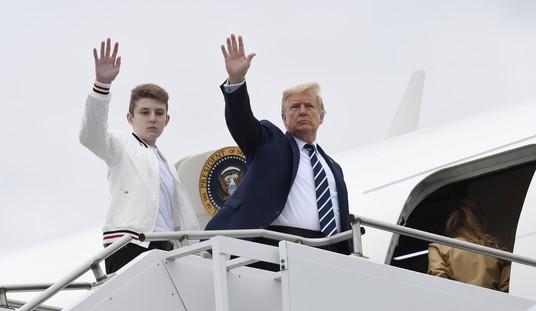Watching Sony cave to threats over screening a film ridiculing North Korea leader Kim Jong Un, it is hard to imagine that once Tinseltown was a very different place. After Pearl Harbor, Hollywood went to war. A string of A-listers put their talent in the service of the nation. In some cases, they put themselves in harm’s way to tell the story of the fight for freedom. Here are 10 largely forgotten examples of patriotic cinema at its best.
10. The Battle of Midway
The legendary John Ford, director of the classic western Stagecoach (1939), found himself and his camera crew filming in the middle of one of World War II’s biggest naval battles. The result was a stunning, 18-minute technicolor film. The riveting live-action combat scenes earned the film a share of the 1942 Oscar for best documentary.
9. Torpedo Squadron 8
While on assignment for the Navy, Ford filmed the members of VT-8 on the USS Hornet. At the Battle of Midway, 29 members of the squadron were killed or went missing in action. Ford edited his old footage of the squadron into an eight-minute film, and the Navy sent copies to their families. It was only many years later that the film became publicly available.
8. Private Snafu
As a training tool for soldiers in boot camp, the U.S. military ordered 26 cartoons featuring the gullible, bumbling Private Snafu (Situation Normal: All Fouled Up). The character, originally created by Theodore Geisel (Dr. Seuss) and Phil Eastman, proved wildly popular. My favorite episode is 1944’s “Booby Traps.” Most of the cartoons were produced by Warner Brothers.
7. Report from the Aleutians
John Huston had just established himself as a top-shelf director with the premier of The Maltese Falcon (1941) when the war came. The first of three films he made for the military chronicled the largely forgotten battle to liberate the Alaskan Islands occupied by the Japanese. The 43-minute technicolor documentary debuted in 1942.
6. The Battle of San Pietro
Huston’s next project proved highly controversial. He was dispatched to film the mission to take a remote mountain pass in Italy. Huston’s crew showed up after the battle and painstakingly had the unit that took the town recreate each stage of the assault while Huston’s crew followed with shaky handheld cameras. The result was a gritty, riveting film that the military brass thought was too brutal to show to the public. The Army chief of staff thought different. He ordered that the documentary be screened for recruits as an introduction to the realities of war.
5. Let There Be Light
Huston’s third assignment proved the most controversial of all. He filmed an hour-long documentary of soldiers recovering from “battle fatigue” and other neuroses at the Mason General Army Hospital on Long Island. Again, the brass thought Huston’s work too grim to see the light of day, though the argument for shelving it was to protect the privacy of the patients. It took 30 years for Huston to get permission to publicly screen the film.
4. The Memphis Belle: A Story of a Flying Fortress
http://www.youtube.com/watch?v=Dn8tqacRXK4
William Wyler was one of Hollywood’s hottest directors when he went to war. In 1942, he had won the Oscar for Mrs. Miniver. His assignment from the armed forces was to capture America’s contribution to the strategic bombing campaign in Europe. His film documents a bombing run by Memphis Belle, the first heavy bomber to complete 25 missions and return to the United States.
Both the crew and 42-minute film were a hit on the homefront. The story was retold in a 1990 movie.
3. Combat America
This documentary was assembled by First Lieutenant Clark Gable, one of Hollywood’s top stars. Gable’s assignment was to document a typical mission of a heavy bomber over Europe. Gable flew several combat missions himself. The film was intended as training tool, though it played in public theaters as well. Since American audiences had already seen Memphis Belle, Gable’s film didn’t attract nearly as big an audience, though it contains some magnificent aerial combat footage.
2. Prelude to War
Director Frank Capra was coming off a string of box offices hits, including You Can’t Take It with You (1938) and Mr. Smith Goes to Washington (1939), when he volunteered to serve in the U.S. Army Signal Corps. There, he produced a series of films requested by the Army chief of staff to explain to American soldiers “Why We Fight.”
Prelude to War is by far the best of the series. Marshall loved the film, and troops patiently sat through screenings. But in truth, by the time the documentary reached the theaters Americans were much more interested in winning the war than being lectured to about how it started. Today the film is regarded as an icon of World War II pop culture.
1. D-Day to Berlin
Hollywood director George Stevens (who hit it big in 1939 with the release of the rousing adventure film Gunga Din) led a U.S. Army Signal Corps film crew documenting the European campaign. Popularly known as “Stevens Irregulars,” the crew shot 14 cans of 16mm Kodachrome film. The footage was discovered, unused, after Steven’s death in 1975. His son, George Stevens, Jr., edited the material and released it as a documentary in 1994.
Perhaps it’s too much to expect Hollywood to take America’s side again the way it did during World War II. After all, being patriotic wasn’t that hard during America’s most popular war when just about every American family had a son or daughter in uniform. Still, while Hollywood and America may have changed, America’s military has not. This greatest generation deserves to have its story told and preserved for future generations.
Check out the previous installments in James Jay Carafano’s ongoing series exploring war films: The 10 Best Movies to Watch to Understand the Cold War, 10 War Movies Guaranteed to Make You Cry, America’s First Wars in 10 Movies, 10 Movies For Understanding the Civil War, A 10 Film Introduction to America’s Turn of the Century ‘Small Wars,’ America Over There! A 10 Film Introduction to World War I, Telling the Story of World War II in 10 Movies, 10 Films that Tell the Future of War, and 10 Films That Show Respect for the American Veteran.








Join the conversation as a VIP Member